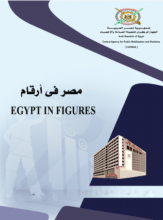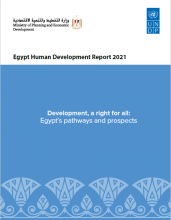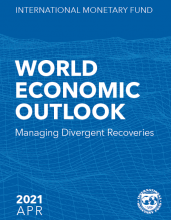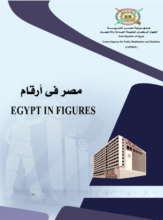Environment
The quality of the environment is the basis for socio-economic development. The environment state in the Arab region has been facing critical challenges, as it remains among those most affected by the repercussions of climate change, particularly sea level rise and drought, which also have dire consequences on food security. While certain countries have witnessed progress, others, mainly countries facing political unrest and instability, face critical environmental threats in terms of water management, desertification, air pollution, and biodiversity loss.
The global lockdown in response to the COVID–19 pandemic significantly impacted the air quality in certain cities in the Arab region between December 2019 and June 2020. Based on the World Quality Air Index, nitrogen dioxide (NO2) concentration dropped in Zarqa, Jordan from 14.4 to 7.7, as well as in Riyadh, Saudi Arabia from 17 to 3, and in Abu Dhabi, UAE from 18.3 to 4.5. The drop in NO2 concentration coincides with the preventive measures taken by countries around the region against COVID–19, which is mainly generated by road vehicles and industrial activities.[1]
With a total estimated population in the region of 444.8 million in 2021, an increase of almost 57 percent from 2000, and an urban population representing more than 59 percent of the total population in 2020, the rapidly growing population and high urbanization rates exert increasing pressures on the available natural resources and on the sustainability and quality of the environment of the cities in the Arab countries.[2][3]
The region is heavily dependent on subsistence farming, fishing and pastoralism, and is characterized by an arid and semi-arid climate. The average annual precipitation varies from the extremely arid weather in Bahrain and Qatar at precipitation lower than 100 million cubic meters, to Sudan and Algeria where precipitation exceeded 200 million cubic meters according to the latest available data in 2017.[4] Extreme weather is currently more frequent in the Arab region, characterized by extreme temperatures and shorter but more intense precipitation periods.[5]
On the other hand, 88.6 percent of the Arab countries’ populations are using at least basic drinking water services according to the latest available data in 2017. The relatively insufficient and overexploited water resources, variable climatic conditions and deforestation are playing an important role in aggravating desertification in some countries of the region.[*]
Energy resources are quite abundant in the Gulf region driving the CO2 emissions high and the prices of the national oil products low. The highest CO2 emissions per capita were recorded in Qatar in 2018 at 31.3 tonnes of CO2 per capita, much higher than the world average of 4.4 tonnes of CO2 per capita, while 6 out of the top 10 highest CO2 emissions per capita countries originated from the Arab region.[6] Additionally, all Arab countries suffer from air pollution, exceeding the World Health Organization’s guideline limit recording a mean annual concentration of PM2.5 higher than 10 µg/m3, with 11 out of 22 Arab countries exceeding the world average at 45 micrograms per cubic meter.[7]
The impact of the consumer behavior – that is based on the advanced marketing techniques that encourage the utmost consumption of goods and services regardless of the products and services’ sustainability— has been manifested in the Arab region in the past few decades by significant environmental concerns, mainly desertification, high CO2 emissions and deforestation for the purpose of expansion. The main environmental problems, in addition to the unsustainable energy consumption behavior and the limited attention that governments are giving to environmental protection in their national strategies, are leading to an increase in the overall air, water and waste pollution levels in the Arab region, in addition to the unsustainable depletion of the available natural resources.
This overview has been drafted by the ADP team based on most available data as of March 2021.
Sources:
[1] Air Quality Open Data Platform. 2020. Air Quality Index. [ONLINE] Available at:
https://waqi.info/ [Accessed 02 March 2021].
[2] United Nations Department of Economic and Social Affairs. 2021. World Urbanization Prospects. [ONLINE] Available at: https://population.un.org/wup/Download/ [Accessed 02 March 2021].
[3] United Nations Department of Economic and Social Affairs. 2021. World Population Prospects. [ONLINE] Available at: https://population.un.org/wpp/Download/Standard/Population/ [Accessed 02 March 2021].
[4] Food and Agriculture Organization. 2021. AQUASTAT Database. [ONLINE] Available at:
http://www.fao.org/nr/water/aquastat/data/query/index.html?lang=en [Accessed 02 March 2021].
[5] United Nations Statistics Division. 2021. Statistical Database. [ONLINE] Available at:
https://unstats.un.org/home/ [Accessed 02 March 2021].
[6] International Energy Agency. 2021. [ONLINE] Available at: https://www.iea.org/data-and-statistics?country=QATAR&fuel=CO2%20emissions&indicator=CO2PerCap [Accessed 02 March 2021].
[7] The World Bank. 2021. World Development Indicators. [ONLINE] Available at:
https://databank.worldbank.org/source/world-development-indicators [Accessed 02 March 2021].
[*] Water scarcity level is defined to be the total per capita freshwater resources available per inhabitant over the period of 1 year. Values between 500 and 1,000 m3/ca/yr indicate water scarcity and values less than 500 m3/ca/yr indicate absolute scarcity. This categorization was set by Falkenmark and adopted internationally (Falkenmark. The massive water scarcity threatening Africa-why isn't it being addressed. 1989).




